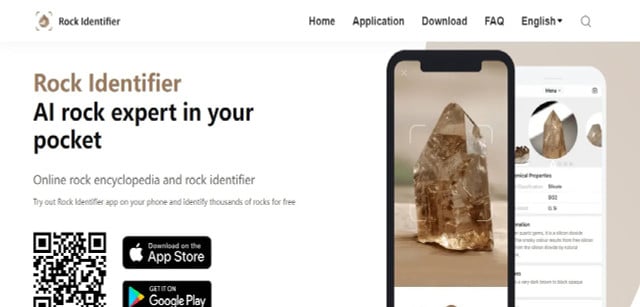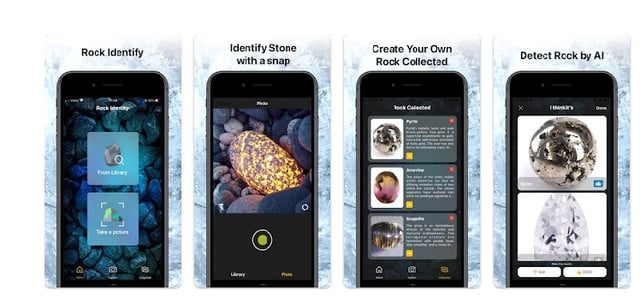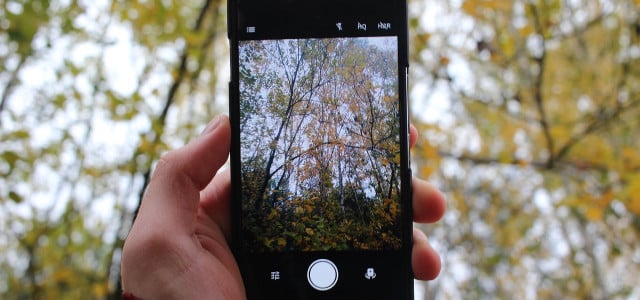Wondering what the difference is between those different colored rocks you found on the beach? We’ll share 6 rock identification apps that you can use when you’re out and about.
Did you know that there are three different kinds of rock? And within these groups, there are a whole bunch of other different kinds of rocks. Yup, there’s more to rocks than meets the eye, and they are categorized based on how they were formed.
- Igneous rocks are volcanic rocks, which are formed when magma or lava cools and solidifies, deep inside the earth, examples are basalt and granite — very hard rocks.
- Sedimentary rocks are formed when particles of organic matter and minerals accumulate in layers near the earth’s surface, when buried, they become cemented and form rocks. Some common examples are sandstone, limestone and shale.
- Metamorphic rocks are formed when existing rocks are altered due to heat or pressure, usually deep in the Earth’s crust or at boundaries where the earth’s tectonic plates collide. Slate and marble are the most common examples.
But why identify rocks? Well, they can actually reveal a lot about the environment around them — let’s learn more about why geologists think geology rocks!
Why Identify Rocks?

Rocks play an important part in nature, for example forming cliffs in the Grand Canyon National Park where birds can nest or providing soil nutrients to Redwood trees which are the largest in the world, or a dark, shady home for invertebrates. Rocks and minerals are used in our modern daily lives in building and road construction, jewelry, statues, or even for writing.
In addition to being useful, rocks can also give us some clues about the history of the earth. Radiometric dating can be used to estimate the age of a rock, which in turn gives us some ideas about how old the earth is. They can also reveal whether an area of the earth used to be different, for example, if igneous rocks are present, it is a sign that the area was once volcanic.
We all know that you can go on nature walks to identify birds or flowers, but did you know you can do the same thing with rocks? There are tons of apps out there for beginners to get started, we’ll give you the lowdown on the best 6 free rock identifier apps.
Remember, while identifying rocks is fun and you may even find some beautiful ones, it’s best to leave them where you found them. As mentioned they play a part in their local habitat, so should be left alone to provide shelter for bugs and animals.
1. Best Rock Identification App for Beginners — Rock Identifier: Stone ID



This app allows you to take a photo of a rock and it will identify it for you and give you some information about it. It also provides a map, showing the localities of the rock in your country. You can save your collection and also make a wishlist, it even discusses real versus fake gemstones, however, some customers have reported the ID as not always being 100% correct.
Platform: Android and iOS
2. Stone Identifier Rock Scanner



This rock identifier app is also perfect for beginners, simply take a photo of a rock and the app will give you a list of similar rocks for you to identify from. You can save your “collection” for future reference (remember, rocks shouldn’t be removed from the environment) and read more about the different kinds of rocks. Some customers have mentioned that there are a lot of ads.
Platform: Android and iOS
3. Rockcheck — Rock Identification app the Old Way



RockCheck works like a traditional ID key, in that you answer yes or no questions about the rock to narrow down its identity. It is a great teaching aid as it includes fun facts about rocks, as well as some experiment tips, but it can equally be enjoyed by students and beginners in geology. One downside is that the color design is a bit basic.
Platform: Android
4. Minerals Guide: Rocks, Crystals and Gemstones



This rock identification app can identify hundreds of different stones and rocks by color, hardness or streak and it gives detailed information about each. It works offline too, however, some reviewers mentioned that it seems like the rock descriptions have been lifted from Wikipedia.
Platform: Android
5. Rock Identifier Apps: Geology Toolkit Lite
This rock identifier app is good for those who already have a little knowledge of geology. It allows users to explore rock photos under a microscope, which can be compared to your specimens. The lite version is free, or the premium version costs about $10, the difference being that the latter includes 3D versions of the rocks, which can be zoomed in on and features such as a world rock map. Ideal for students or geologists who need to know more detail about rock specimens. Some reviewers mentioned you need to know the ID of the rock to use this app and the ads can be annoying.
Platform: Android
6. Best for Rock Collectors — Handbook of Rocks



This final app is best for those who already have some geology knowledge. It organizes the rocks into the three main rock groups, they can then be searched by name, the catalog includes over 4,000 rocks, with definitions of each. It also includes over twenty color diagrams including the rock cycle. Customers raved about the detail included in the app, but unfortunately, there is no camera to compare your own specimens.
Platform: Android
Read more:
- Plastiglomerate: Plastic Rocks Are a Horrible New Type of Pollution
- How to Find Geodes in 4 Steps (And Where to Look)
- What Is Ecological Succession? Definition, Examples and Types
Do you like this post?









